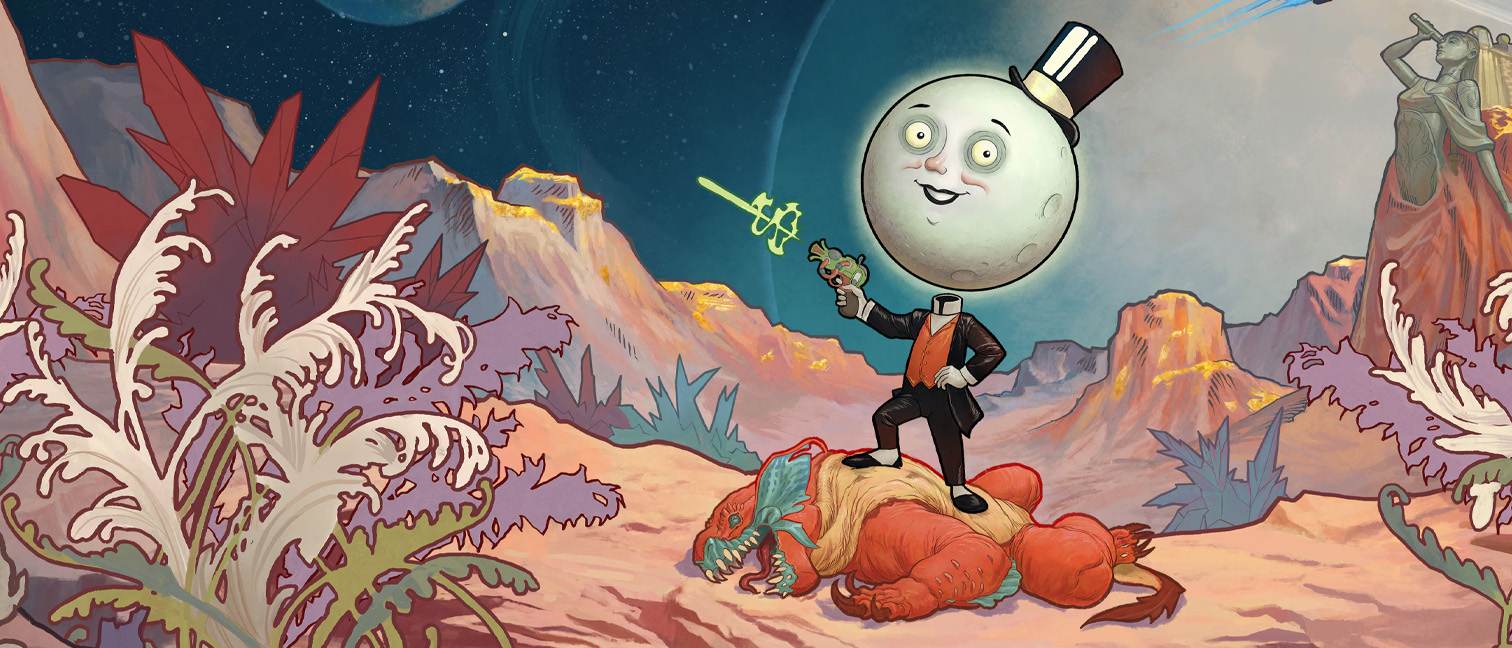Our Verdict
A confident sequel that finally gives the series its own identity, but The Outer Worlds 2 feels like an evolution of ideas rather than something new.
For
- Beautifully realised world design
- Combat feels solid and varied
- Deep and evolving gameplay
Against
- You've played in these stars before
Why you can trust Creative Bloq
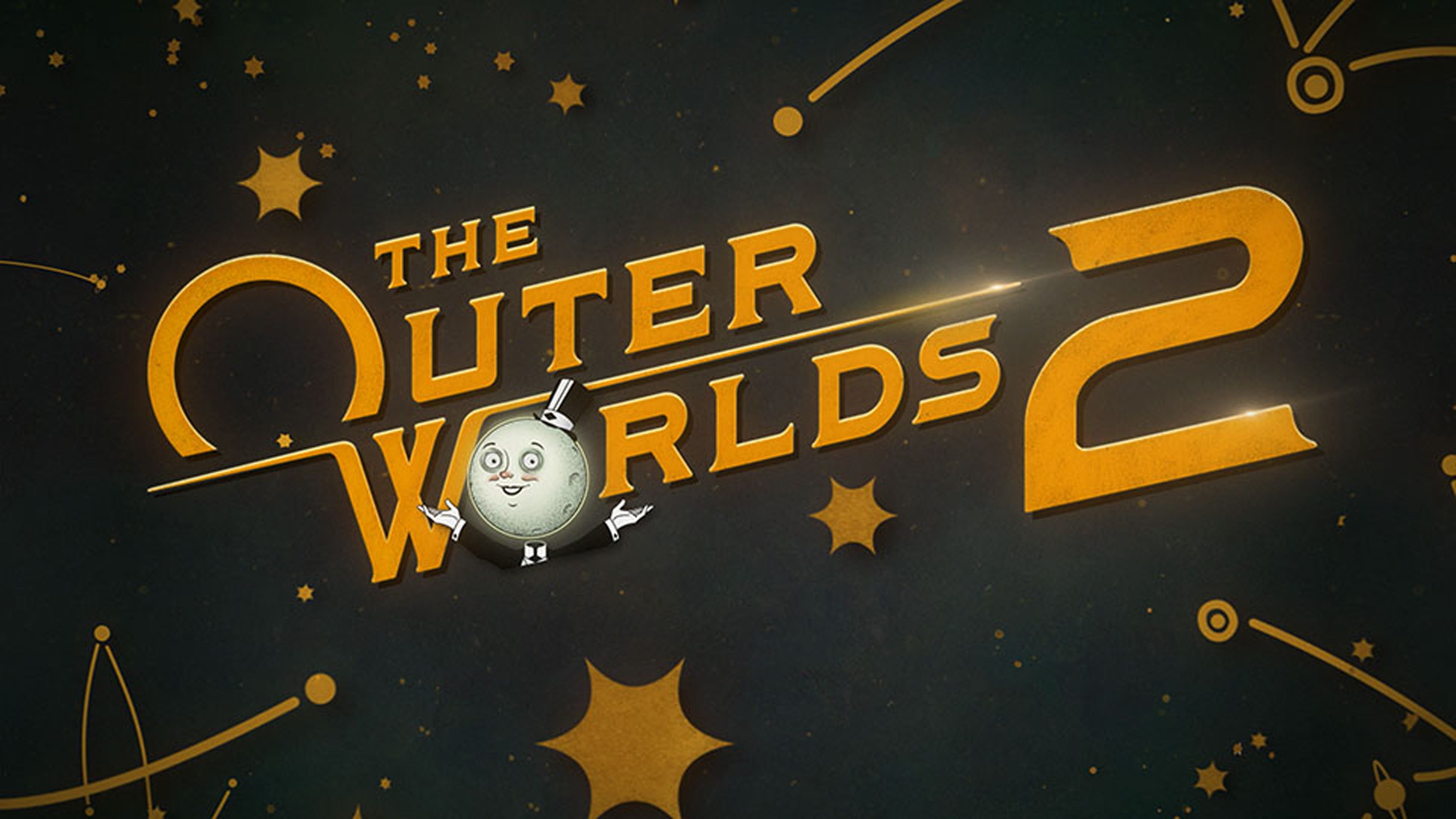
Publisher: Microsoft Game Studios
Developer: Obsidian Entertainment
Release date: 23 October
Format: Xbox Series X/S (tested), PC, PS5
Game engine: Unreal Engine 5
The first Outer Worlds always felt like it couldn’t quite decide who it wanted to be. It borrowed the swagger of Fallout and the tone of BioShock, but it never stamped its own name on the frontier. It looked good, it played fine, but it never sang to its own tune. The Outer Worlds 2 fixes that, kind of. This is the sequel that finds its voice, both visually and narratively, but still relies on tried and trusted ideas to underpin its world. It’s more confident, more chaotic, and far more fun, but not completely new.
Obsidian’s art team has thrown away the polish and turned up the grit. The Art Nouveau influences are pushed aside for Art Deco, but it's been left to rust, stripped bare, and wired back together. You can see the joins, literally. Panels spark, pipes hum, cables hang like vines. It’s Art Deco gone bad; a style symbolic with opulence and modern luxury, optimism and elegance, has been left unloved, collapsing under the weight of corporate ambition.
This new aesthetic, a heady blend of 1930s pulp serials like King of the Rocket Men, Old West functionalism, and WWI machinery, grounds my experience of Arcadia. Each settlement I encounter tells a story through its design: trench lines carved into tundra, and frontier colonies where logos fade on cracked concrete. Corporate and factual interests are everywhere; you're never far away from a towering monument to capitalism, religion, or authoritarianism.
The first Outer Worlds flirted with this imagery. The sequel lives it. Colour is richer, the tone sharper, and everything feels earned. There's also room to have fun, such as a helmet that pixelates the world, but even in a quirky moment like this, as the screen devolves to a blocky patchwork, the game's design remains cohesive.
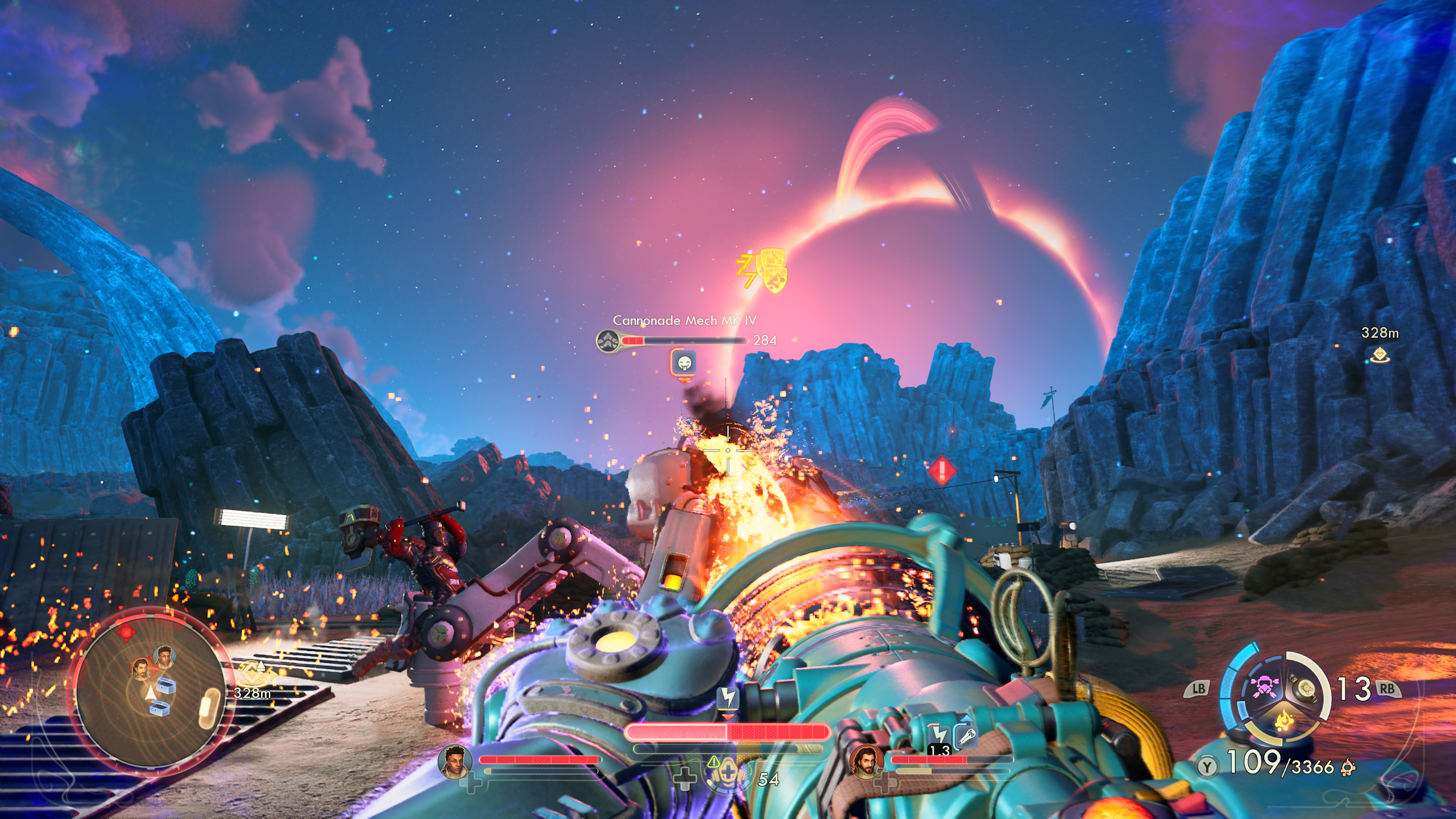
A shot of fun
Combat feels vastly improved. Guns kick and snarl with proper weight now, and there’s a reason to carry a full arsenal. Enemies have specific resistances and weaknesses, plasma melts what bullets barely dent, and a good shock blast will short out mechanical foes. It’s comically satisfying to carry half a dozen guns like a walking Ammu-Nation, swapping between fire, ice, and goo mid-fight.
That said, some weapons feel overpowered early on. I found a modified shotgun-hammer hybrid in the opening hours and never looked back. Nothing else came close. A few early finds outshine almost everything later, which makes scavenging for new tools of destruction feel a little pointless. But when the fights click, when you’re juggling ammo types, abilities, and companion support, the combat sings.
There aren’t many traditional 'bosses' here. Most missions end not in a hail of bullets, but with a peppering of wry remarks. Talking your way through an enemy’s ideological armour, breaking them down until they sit, defeated and thoughtful, is immensely satisfying. When battles do happen, they’re sharp, scrappy, and gloriously absurd – but don't expect any grandly designed encounters.
Daily design news, reviews, how-tos and more, as picked by the editors.
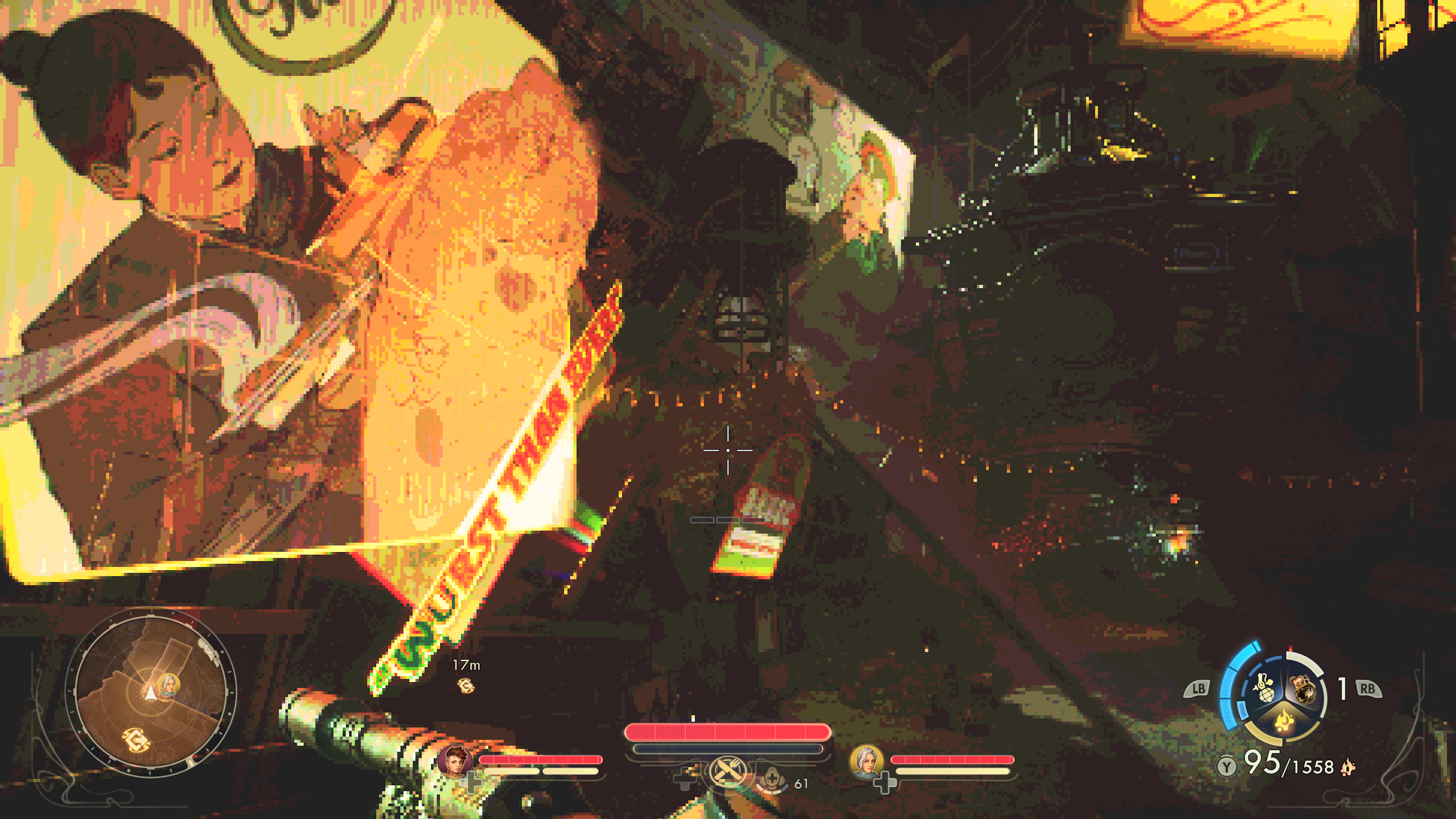
The world-building is stunning. Obsidian’s level designers have learned to say more with less: every outpost, trench, and mining shaft feels built with purpose, and when the studio flexes, it really flexes.
One late-game planet features an icy underworld teased from the opening hours, seen underfoot through snow-covered glass, a vast industrial labyrinth carved from glacial glass. Unreal Engine 5 gleams here, reflecting light in ghostly blues and purples, selling the chill of its metallic caverns and machinery. It’s a breathtaking moment, the kind that makes you stop and pan the camera just to soak it all in.
That said, UE5 comes with the usual caveats: occasional stuttering, framerate dips on Xbox Series X, and the classic Obsidian cocktail of minor bugs – crashes, dropped audio, and the odd moonwalking NPC. Nothing game-breaking, but enough to remind you this is still a sprawling, ambitious RPG.
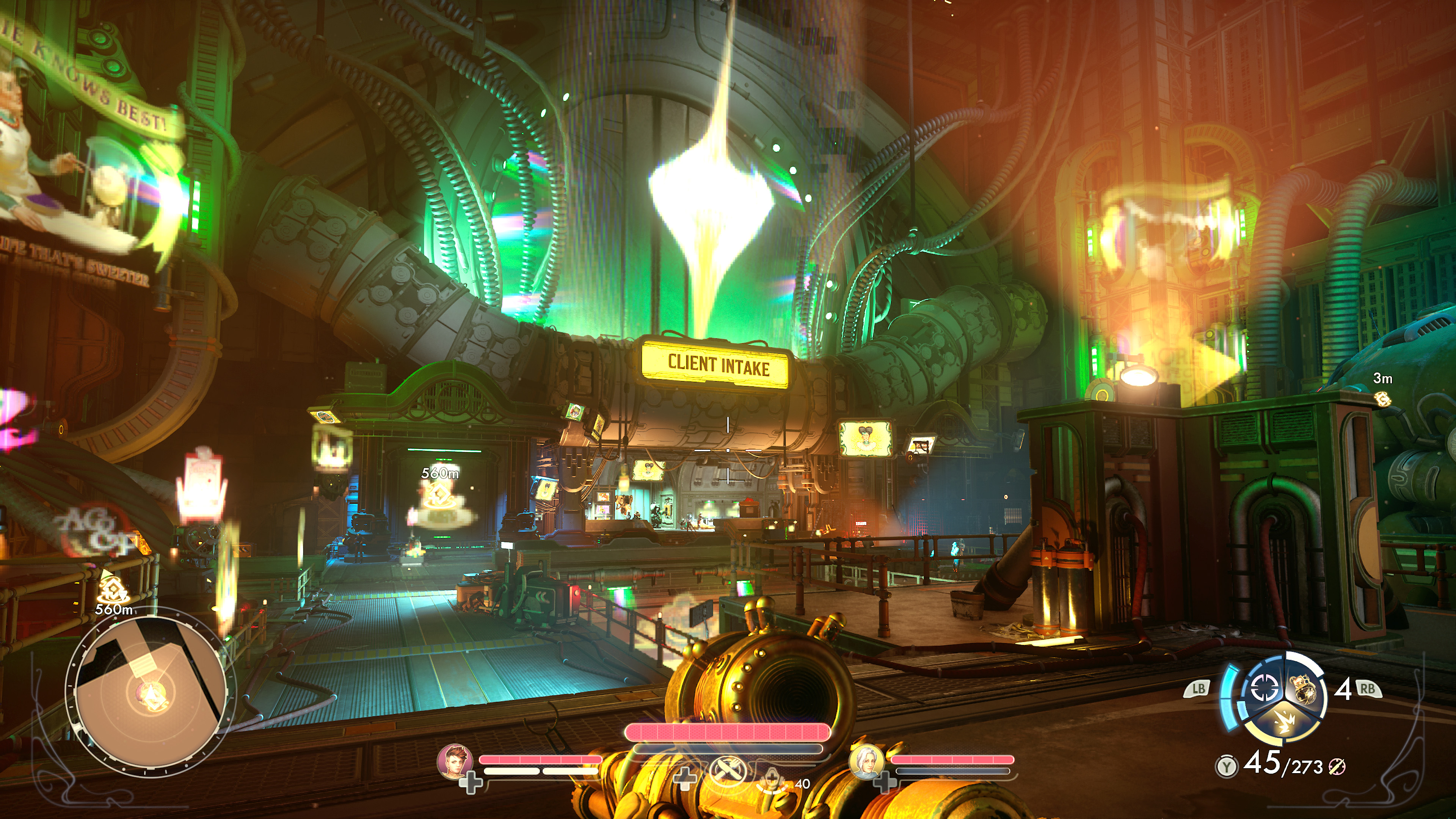
Perks and prompts
Progression in Outer Worlds 2 is deceptively smart. You’re still free to assign XP across a suite of skill trees. There are twelve in total, including Engineering, Persuasion, Leadership, Hacking, Stealth, and Guns, but the game quietly keeps an eye on how you spend your points, too.
After levelling up and playing for some time, it’ll nudge you with 'evaluation prompts' that gently suggest a new path, such as offering a buff to expand your weapon magazines but a debuff to dampen damage for eight seconds on reload. It's a gamble, but it also keeps the game fresh and prevents you from breaking the carefully designed systems. I began randomly upgrading Perks and was offered a bonus to stay in my lane (at the start of the game, you choose three Perks to focus on).
You can accept or refuse these offers, but I found them oddly compelling. It’s like the game is studying you, nudging, persuading. Eventually, I chose one that locked me into having to accept every offer the game makes, which felt like rolling the dice every few hours to gamble on a new way to play.
Perk categories include Combat, Science, Personality, Leadership, and Exploration, with each granting passive and active bonuses. Traits and flaws return too, evolving naturally through play, cowardice if you run too often, paranoia if you die too many times.
It’s a classic Obsidian approach, deep, flexible, and darkly funny, but now it’s tied into a meta-system that monitors you. It’s clever, a little unnerving, and keeps the game fresh across dozens of hours.
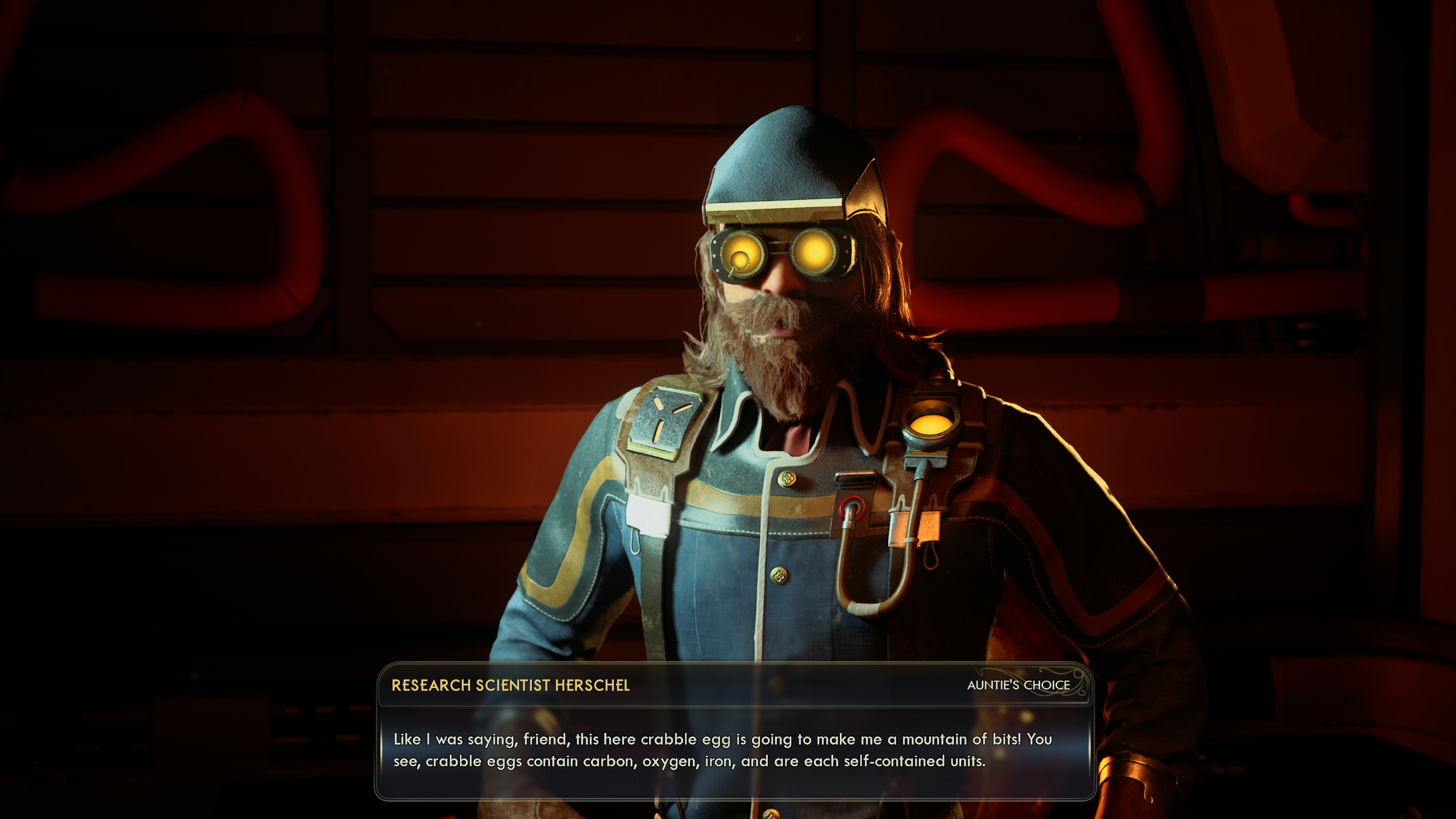
Let's talk
Dialogue is where Outer Worlds 2 truly shines. Every conversation feels crafted, and I never once found myself skipping text or zoning out. Characters are relentlessly quirky but never redundant. Every stranger has a story worth hearing, even the throwaway mechanics and cultists tucked away on the edge of the map. It's the approach Obsidian is renowned for, and if, like me, you're easily distracted, the goal of saving the universe always feels a little less important if there's a bottle of rare booze to find to help a comic get his mojo back.
Your companions matter, too. Who you bring along can change how scenes unfold, opening or closing options depending on their loyalties and opinions. It’s all tied back to that classic Obsidian moral ecosystem: charm or threaten your way through a quest, and the world will remember.
The game’s biggest emotional swings don’t come from firefights but from dialogue, those quiet, human moments when you realise how much the world is paying attention to what you say. But there's also huge FOMO if you see a locked dialogue option, which on a number of occasions made me reload an earlier save to grind XP so I could upgrade my conversation skills.
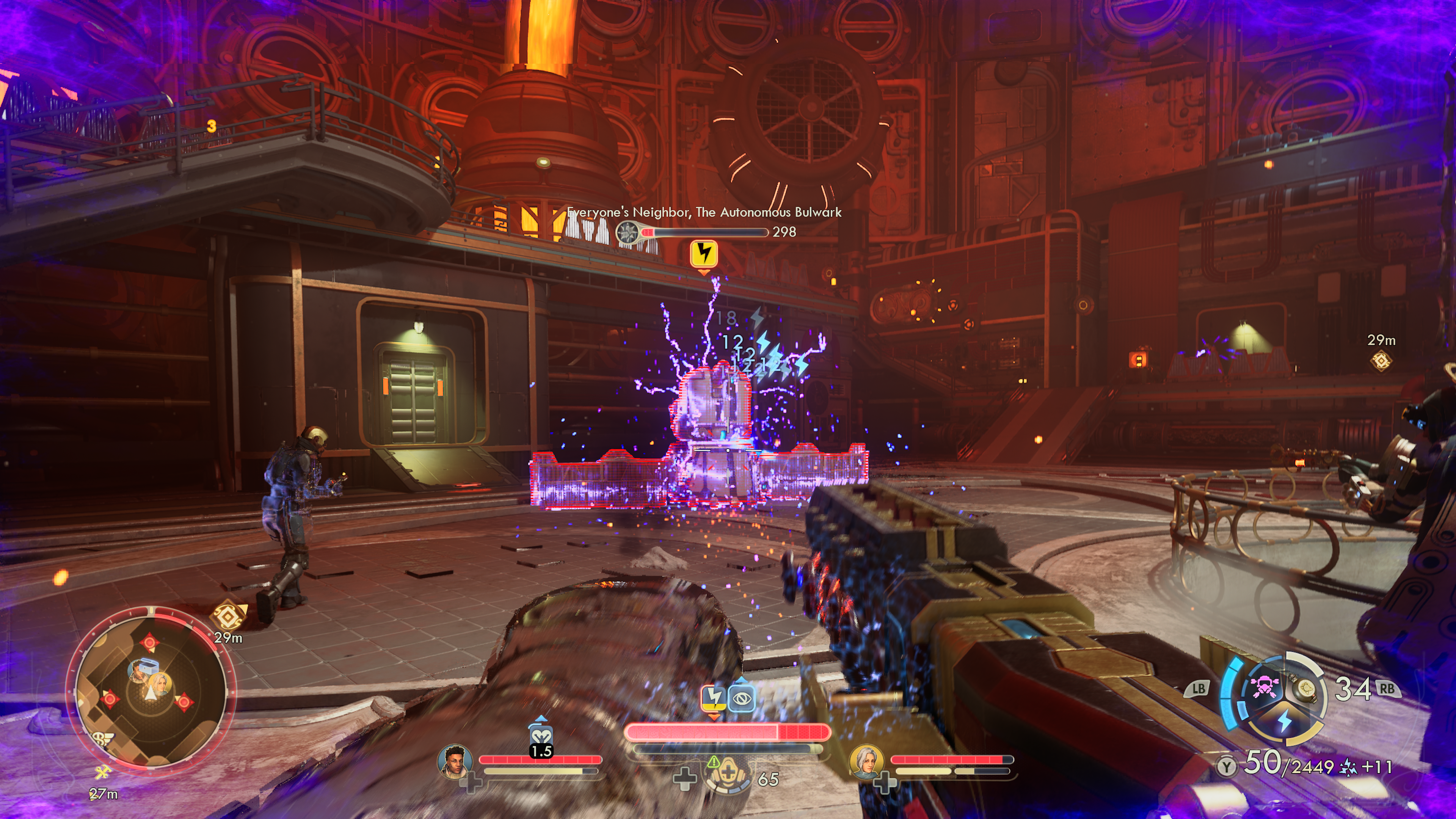
Worlds to discover
Exploration remains the backbone. There’s always more than one way to reach your objective: a side vent, a hidden data path, a sly bit of persuasion. I built my character around Hacking, Engineering, and Conversation, and it completely changed my route through the story. Doors opened, literally and narratively, that would have stayed locked for a more combat-heavy build.
There are limitations, though. By late game, Perks demand heavy investment; you’ll need 18–20 points in a single branch to see any real impact. That funnels you into specialising, whether you want to or not. Still, Obsidian gives you time and space to explore, and for most players, that focus will feel natural.
The Outer Worlds 2 finally delivers on the promise of the original. It’s bigger without being bloated, smarter without losing its mischief, and confident enough to be weird where it matters. You’ve done this before, of course, in Fallout, Mass Effect, BioShock, but Outer Worlds 2 has enough nuance, surprises, and visual confidence to sell its variant on the formula (Auntie will be pleased).
Yes, there are bugs. Yes, you’ll find the occasional overpowered gun or underwhelming side quest. But the joy of Obsidian’s design is in the tinkering: the way builds evolve, conversations shift, and systems push back at you just enough to make every decision feel personal. This is The Outer Worlds as it should have been all along: creaky, colourful, satirically corporate, and completely captivating.
out of 10
A confident sequel that finally gives the series its own identity, but The Outer Worlds 2 feels like an evolution of ideas rather than something new.

Ian Dean is Editor, Digital Arts & 3D at Creative Bloq, and the former editor of many leading magazines. These titles included ImagineFX, 3D World and video game titles Play and Official PlayStation Magazine. Ian launched Xbox magazine X360 and edited PlayStation World. For Creative Bloq, Ian combines his experiences to bring the latest news on digital art, VFX and video games and tech, and in his spare time he doodles in Procreate, ArtRage, and Rebelle while finding time to play Xbox and PS5.
You must confirm your public display name before commenting
Please logout and then login again, you will then be prompted to enter your display name.
